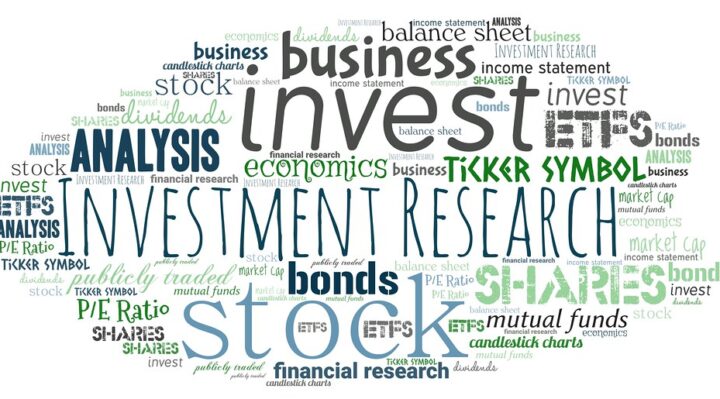Investment is the key to growing your wealth. However, with so many investment options available, selecting the best one can be difficult. Mutual funds and exchange-traded funds (ETFs) are two popular investment funds that have become increasingly popular in recent years. In this article, we will help you understand the basics of mutual funds and ETFs, how they differ, and what makes them unique.
Table of Contents
- Introduction
- What are Mutual Funds?
- Types of Mutual Funds
- Equity Funds
- Debt Funds
- Balanced Funds
- Index Funds
- Tax-Saving Funds
- Sector Funds
- International Funds
- Hybrid Funds
- What are ETFs?
- Differences between Mutual Funds and ETFs
- Advantages and Disadvantages of Mutual Funds
- Advantages
- Disadvantages
- Advantages and Disadvantages of ETFs
- Advantages
- Disadvantages
- Which One is Right for You?
- Conclusion
1. Introduction
Mutual funds and ETFs are investment vehicles that pool money from different investors to invest in various financial instruments such as stocks, bonds, and money market instruments. They offer diversification, affordability, and professional management. Both are similar, yet different in their structure, investment approach, and fees.

2. What are Mutual Funds?
A mutual fund is an investment fund that pools money from multiple investors to invest in different assets. The fund is managed by a professional fund manager who invests the money in various financial instruments such as stocks, bonds, and money market instruments. The returns earned are distributed among investors based on their contribution to the fund.
3. Types of Mutual Funds
There are various types of mutual funds on the market. Here are some of the popular types of mutual funds:
3.1. Equity Funds
Equity funds invest in the equities of various corporations. These funds are appropriate for investors who are willing to take on more risk in exchange for bigger returns. The risk and returns of equity funds are directly related to the stock market.
3.2. Debt Funds
Debt funds invest in fixed-income instruments such as bonds, debentures, and government securities. These funds are suitable for investors who are looking for a low-risk investment option with regular income.
3.3. Balanced Funds
Balanced funds hold both stock and debt securities. These funds are suitable for investors who want to balance the risk and returns of their investments.
3.4. Index Funds
Index funds invest in the stocks that are part of a particular stock index such as the Nifty or the Sensex. These funds seek to match the performance of the underlying index.
3.5. Tax-Saving Funds
Tax-saving funds, also known as ELSS (Equity Linked Saving Scheme), invest in equity instruments. These funds provide tax advantages under Section 80C of the Internal Revenue Code.
3.6. Sector Funds
Sector funds invest in the stocks of a particular sector such as healthcare, technology, or energy. These funds are suitable for investors who want to invest in a particular sector.
3.7. International Funds
International funds invest in the stocks and bonds of foreign companies and governments. These funds offer exposure to global markets.
3.8. Hybrid Funds
Hybrid funds hold both equity and debt securities. These funds are suitable for investors who want to have a mix of both equity and debt in their portfolio. Hybrid funds are also known as balanced funds and are ideal for investors who have a moderate risk appetite. The equity portion of the hybrid fund provides capital appreciation, while the debt portion provides stability and regular income.
Hybrid funds have a fixed allocation of equity and debt, which is decided by the fund manager based on the market conditions and the investment objective of the fund. Hybrid funds have different subcategories such as aggressive hybrid funds, conservative hybrid funds, and balanced hybrid funds, which cater to different investment objectives.
4. What are ETFs?
ETFs, or exchange-traded funds, are investment funds that trade on stock exchanges in the same way that individual stocks do. They are similar to mutual funds in terms of pooling money from investors and investing in different assets. However, ETFs are traded throughout the day on the stock exchange, unlike mutual funds which are priced at the end of each trading day.
5. Differences between Mutual Funds and ETFs
The main difference between mutual funds and ETFs lies in their structure and trading mechanism. While mutual funds are priced at the end of each trading day, ETFs are traded throughout the day on the stock exchange. ETFs also have a lower expense ratio compared to mutual funds.
6. Advantages and Disadvantages of Mutual Funds
6.1. Advantages
Professional Management: Mutual funds are managed by professional fund managers with investment management experience.
Diversification: Mutual funds invest in a diversified portfolio of assets, which helps to minimize risk.
Affordable: Mutual funds are affordable as they allow investors to invest with a small amount of money.
Liquidity: Investors can sell their mutual fund units at any time and get their money back.
6.2. Disadvantages
Fees: Mutual funds charge various fees such as management fees, entry and exit loads, and administrative expenses, which can eat into investors’ returns.
Lack of Control: Investors have no control over the investments made by the fund manager.
Tax Implications: Mutual funds are subject to capital gains tax, which can impact the returns earned by investors.
7. Advantages and Disadvantages of ETFs
7.1. Advantages
Low Expense Ratio: ETFs have a lower expense ratio compared to mutual funds, which helps to maximize returns for investors.
Flexibility: ETFs can be bought and sold throughout the day on the stock exchange, giving investors more flexibility.
Diversification: ETFs invest in a diversified portfolio of assets, which helps to minimize risk.
7.2. Disadvantages
Brokerage Fees: Investors need to pay brokerage fees to buy and sell ETFs, which can impact their returns.
Bid-Ask Spread: ETFs have a bid-ask spread, which is the difference between the buying and selling price of the ETF. This can have an effect on investors’ returns.
8. Which One is Right for You?
The choice between mutual funds and ETFs depends on various factors such as investment objective, risk tolerance, and investment horizon. Mutual funds are suitable for investors who want professional management and diversification, while ETFs are suitable for investors who want flexibility and a low expense ratio.
9. Conclusion
Mutual funds and ETFs are popular investment options that offer diversification, affordability, and professional management. While mutual funds and ETFs have similar investment objectives, they differ in their structure and trading mechanism. The choice between mutual funds and ETFs depends on various factors such as investment objective, risk tolerance, and investment horizon.



